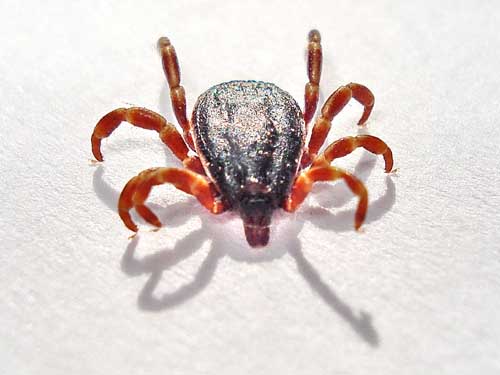National ticking
Have dangerous, exotic Hyalomma ticks reached Poland? This is a question we want to find the answer to with the involvement and help of the public. Everyone can help!
Have dangerous, exotic Hyalomma ticks reached Poland? This is a question we want to find the answer to with the involvement and help of the public. Everyone can help!
Have dangerous, exotic Hyalomma ticks reached Poland? This is a question we want to find an answer to with the engagement and help of the community. Everyone can contribute!
The goal of our project is to check and map the presence of Hyalomma ticks, also known as "Monster ticks," in Poland. The project allows for sharing observations of unusual ticks with scientists and sending them for research at our center. Knowledge of the presence of Hyalomma ticks will help prevent diseases transmitted by these ticks. Our project is a citizen science project: it relies on the support of the community and shares the gathered knowledge with the community.
By participating in our project, you will:
Adult females are up to four times the size of common ticks in Poland.
Their body colour can range from reddish-brown to almost black.
Hyalomma ticks are large arachnids with long legs.
They are characterised by their high speed of movement and actively stalk potential hosts.

In Europe, there are increasing reports of the emergence of 'exotic' ticks, which are finding favourable conditions for survival as the climate warms. Such species include Hyalomma ticks ('Monster tick'). Thousands of Hyalomma larvae and nymphs enter Europe and Poland every year during the spring migration of birds. Until now, the ticks have been dying due to low temperatures and high humidity. However, warm and dry springs and summers have contributed to reports of adult Hyalomma ticks attacking humans and animals in recent years, e.g. in Germany, the Czech Republic, Slovakia and even Sweden. Ticks there have been collected from horses, dogs, cattle and also found in homes.
Hyalomma ticks can pose a very serious threat to human health as they transmit the dangerous Crimean-Congo haemorrhagic fever virus (CCHFV). The mortality rate of those infected with the virus is high (10-60%) and treatment is unavailable. Nothing is known about the presence of Hyalomma ticks in Poland. The aim of the project is to find out if and where exotic Hyalomma ticks have arrived.
Involving the public in the 'National Tick Hunt' programme can contribute to the collection of invaluable knowledge about new tick threats and to the development of science. The knowledge gathered will allow the prevention of tick-borne diseases and the mapping of risks
How to help? Hyalomma ticks are much larger than native Polish ticks and very mobile [link to photo and tips on HOW to spot a Monster tick]. Send a suspected tick for examination or a form with a photo.
Different tick species are vectors of a variety of pathogens, whether parasitic protozoa, bacteria or viruses. Information on the tick's appearance (photographs of the back and abdomen), as well as data on where the tick was collected and its host and the site of the bite (form), will allow the range of these ticks to be assessed and the risk of the diseases they transmit to be controlled.
Not all ticks transmit pathogenic microorganisms. To determine this, laboratory tests for specific pathogens in the tick are necessary. If you would like to find out if a tick that has bitten you or your pet carries dangerous pathogens, send us your tick for testing.
